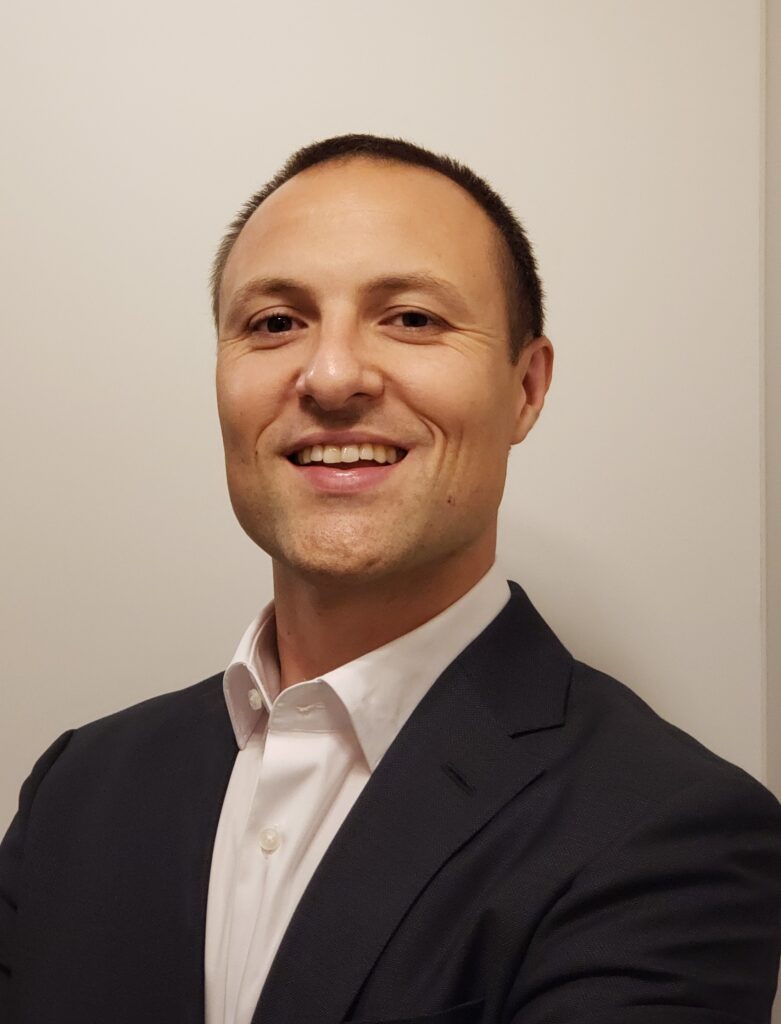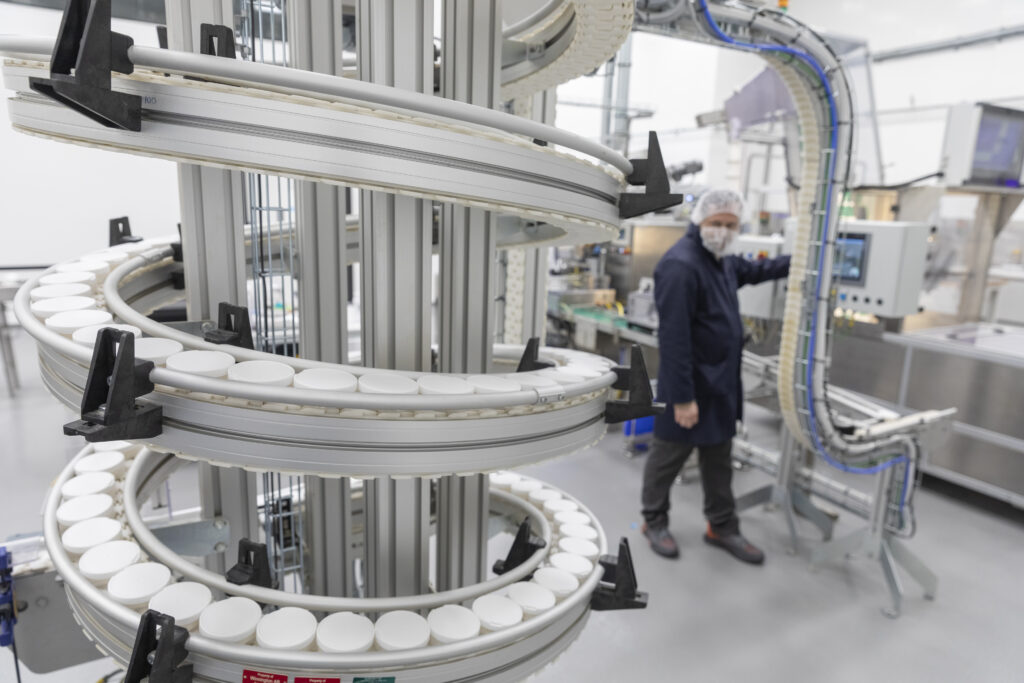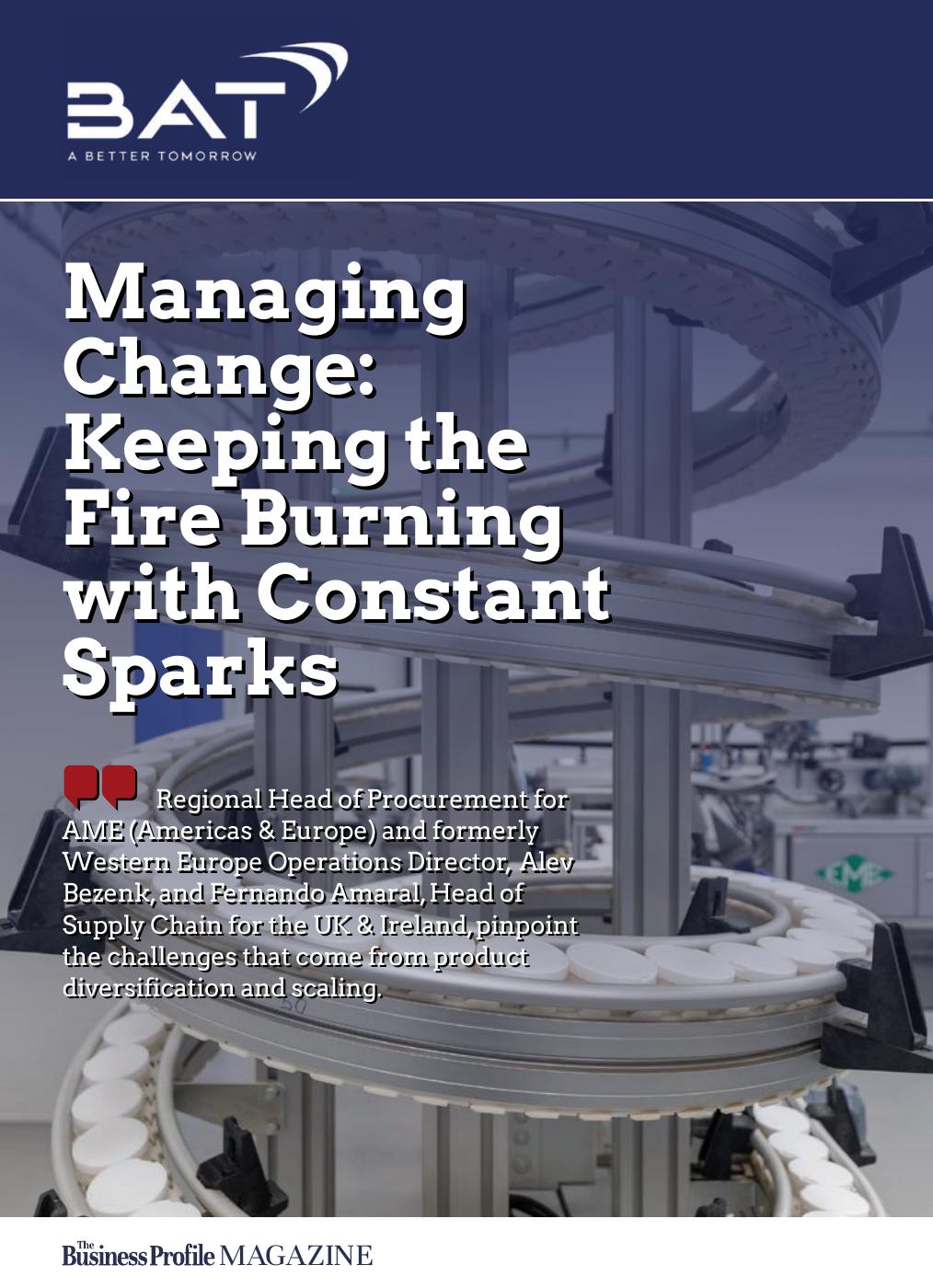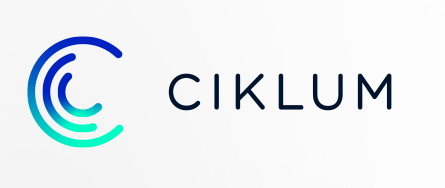Regional Head of Procurement for AME (Americas & Europe) and formerly Western Europe Operations Director, Alev Bezenk is striving to maintain a positive culture of continuous learning, improvement and transformation. Joined by Fernando Amaral, Head of Supply Chain for the UK & Ireland, they pinpoint the challenges that come from product diversification and scaling, and the role digitisation has played in keeping up with BAT’s own pace of change.
Hello, both. Could you please begin by each setting the scene, both in terms of your specific roles, but also the landscape BAT is operating in currently? Alev, could you go first?
I have been with BAT since 2002. Addressing my former role, Western Europe consists of 23 markets made up of six supply chain teams, but it’s an ever-expanding operation as new product categories are being introduced. In a short space of time, our core product offering has evolved from tobacco to also now include nicotine pouches (Velo), tobacco heating products (Glo) and vapour products (Vuse).
This diversification and expansion comes from our business transformation to build a smokeless world, fulfilling the demand of a very dynamic consumer base, and also growing competition. However, this diversification also brings new complexity, meaning new locations, new supply routes, bigger production volumes, different production and distribution requirements, different levels of demand for different products in different parts of the world; coupled with fast moving and ever evolving consumer trends, and also ensuring we drive sustainability.
Any change is complex. But the speed and extent of this product transition is unlike anything most other sectors will have experienced. They all come with changing regulatory and compliance considerations we must adhere to.
There is also an additional complexity in terms of the way consumers want to receive products. With tobacco we never had an ecommerce platform, but with our new products we now have one, creating a whole new route to market.

Traditionally, with one product category, we were managing around 50-60 SKUs, but in some markets now we are managing thousands.
Fernando, please continue…
I have been with BAT for 16 years now, and in the UK for the past seven. It has been an interesting journey, especially for Western Europe which is often a gateway for what the organisation is looking to do worldwide. The level of collaboration that is required, both regionally and globally, is complex and something we continue to work on in order to tackle some of the challenges that Alev described.
I would add from my side, that you must imagine an industry that is more than 100 years old being targeted towards one type of business, and then being thrown into the electronic world as well. It is a completely different landscape, and you have to adapt fast. It all has implications on your supply chain, the interconnections you have, tier two, three and four suppliers that weren’t part of the process before.

All companies talk about end-to-end visibility when it comes to their supply chains, and they should. But most aren’t trying to navigate that while also adding numerous different elements to that supply chain ecosystem.
Ultimately, we’re striving for the same outcomes as everyone else – satisfying consumer demand, perfecting the last mile, bringing agility and resilience to our network, being more sustainable, and becoming more efficient and profitable too.
Click Below: view the digital brochure version of this content
Please describe the digital journey you have been on to facilitate this degree of change…
Whenever you add new elements to your supply chain, optimizing that supply chain’s operations becomes more complex. Data has typically been generated from different systems or platforms in recent years, which isn’t always the best way to get an end-to-end picture. It is difficult and slow to connect those siloed systems to see how different data sets impact certain scenarios or decisions. Teams can end up spending time trying to gather and access the information instead of evaluating and analysing it. In that time of overcoming the operational challenge, value can be lost.
As part of our transformation, it has been vital to gain a clearer picture much quicker, and that has required better synchronization of those systems.
Is it fair to suggest you are having to navigate a product, supply chain, and digital transformation all at the same time?
Traditionally, you would make sure the design of a transformation project was perfect from the beginning, before implementing it. But there simply isn’t time for companies to do that now. The end game is always changing, so it is critical to make that start to the transformation journey, and then to be agile along the way. Priorities will change, new pain points will evolve, consumer demand will pivot. But you first must determine what those pain points really are, so we actively wanted to deliver minimum viable products (MVPs) going through trial and error, to establish those baselines and remedy them as quickly as possible.
How does the global nature of your organisation impact this effort?
It means we must transform as a collective function and that includes managing and connecting a lot of data that sits both in and outside of BAT’s ecosystem. We need to consider distributors, trade partners, warehouses, while there are also different geographies with potentially different regulations and different product offerings too.
Part of BAT’s growth has been through acquisitions, creating even more data sets that need to be integrated and managed effectively. There is an entire ecosystem at work, and to optimize our supply chain while undergoing a rapid and complex product diversification, it relies on unification of data across this ecosystem.
It is therefore important to have a strong starting point for new technology trials, and Western Europe, and especially the UK, has become that reference point. Here, we embrace each new shift, form a supply process that can cope with high levels of demand, and look to share that best practice more broadly thereafter.
As such, Western Europe has become key to BAT’s recent developments. A lot of the newer products we sell have been piloted across the area’s multiple markets. While it means the area experiences the biggest challenges and learnings, it also provides opportunities to adapt and expand. As a result, it has become the flagship for transformation, helping BAT around the rest of the world adapt and scale more quickly.
How have you gone about trying to form that more agile, microservice-based architecture that would provide the end-to-end visibility you need, but also that constant scalability and ability to grow?
We have had great partners throughout the journey so far and have been working specifically with Ciklum for a couple of years now. They had the expertise we were looking for regarding what we knew we had to build – so many data sources, and different tools and platforms being brought together. They had the experience, were reliable, and were agile to our specific needs.
Over these two years, they have been instrumental in really understanding those needs and producing something that is satisfying to the end users, even when it comes to those very niche requirements.
We know already that users are comfortable making the transition from what they were using before to this new system, and we are now looking to expand our relationship with Ciklum as we think to more advanced and predictive analytics, and even stronger use of AI.
To what extent has Ciklum helped accelerate the overall process?
Ciklum has been foundational in terms of understanding our architecture and seeing where data is stored and helping us embark on a multifunctional digital transformation project. Working closely with our own development team we have created this relationship where we’re able to map, link and connect data sources so that changes and improvements can be implemented quickly.
That speed is so important. We are becoming agile enough to embed changes and adapt as we go along, rather than trying to bring all elements together, waiting a year, and then the landscape may have changed.
Such pace also requires a strong internal culture of continuous improvement. It would be easy for ideas to get delayed or remain only a discussion. But along with the support of Ciklum, we also have full backing from our own commercial team and get a lot of input from the bottom up, as well, to inspire quick decisions and proactive implementation, even if it means we are learning as we go.
What this also does is create quick wins, which then motivates users and decision makers even more to keep driving forward. They can see the positive impacts, and actually see the role of the supply chain as a business function growing in significance.
Content Sponsor: CIKLUM
From an internal perspective, how has this pace of change impacted your workforce and your approach to change management?
As humans it’s never easy to stop doing things the way we always have done and how we’re used to doing them. There is usually a natural resistance to change, and when it comes to our supply chain the change has obviously been big.
Our approach, therefore, has been to include the users from the very start of the journey – to prioritise their needs and align those with our business needs. We sought to understand what their pain points were and to build something that directly addressed them.
Then, during development phases we made sure validations were being conducted by end users – not the project teams, not Ciklum, not a development person, but the end users themselves. They know their jobs better than anyone and we knew we needed their buy-in for the changes to hit their mark. They could feed back directly whether the new system fixed their challenges, what could be better still, and where we’d done the right thing.
Then, once it’s implemented it doesn’t really feel like a change. One, it’s already familiar; and two, they helped build it!
That collaboration also extends beyond the supply chain to the wider business, and there was especially a lot of interaction with the wider operations teams, as well as commercial, marketing, demand planning and finance teams; partly in terms of the technology’s development, but also to present a united front for what is a cross-functional effort.
We’re not transforming as a standalone supply chain team. We are not trying to tread on anyone else’s toes. We are trying to enhance the business as a whole, and that has to be done collaboratively.
What would your advice be to other organisations embarking on such a multi-faceted, complex transformation?
Don’t delay. You have to talk about the things that matter, in the moment. If we are having proactive discussions day to day, then it makes sense to act on those discussions there and then. Otherwise, soon, those discussions will change, but the challenge will still be left unaddressed. It doesn’t mean the journey is quick. But even long journeys start with the first step, and the longer you delay that step, not only will you fall behind, but the route you needed to take might also change.
This quick, proactive mindset can only come from collaboration and clear communication, with your teams believing that you’re going to deliver for them. But there is also a top-down element, with leadership having to instil trust in people by explaining why the transformations are so important. It requires a collaborative, reciprocal culture which ensures everyone fully understands and supports the decisions being made.
This means showing a lot of success stories and positive examples of improvements along the way to show we are heading in the right direction, for everyone’s benefit. Lots of small sparks that show that the fire will stay alive long-term.
Looking to that longer-term picture, how would you summarise your own journey so far, to creating a more connected, holistic, end-to-end supply chain that supports your recent business diversification? Alev, if you could provide your summary first?
We haven’t hidden away from the complexity. Changes have included a constantly evolving environment, regulations, customers, the sustainability agenda and – in our case – products too. The sooner you start the journey, the better. And that’s what we have done. We have started our journey and engaged with the right people to progress as quickly and professionally as we can.
We don’t know how the market will evolve in the next five years but waiting to find out before becoming more efficient and data-driven won’t help us. We need to constantly assess where we can do more, what our priorities are and what our pain points are. Once you have adopted a culture of constant improvement, of adaptability, of more agile technologies, and a team that’s accepting of change, those reassessments become part of the process rather than ad hoc exercises.
We have encouraged that it is okay to experience failures, as long as you turn them into opportunities. Neither can happen unless you at least make a start.
Fernando, if you could please conclude?
Proactivity is so important. To begin with, you might be the unpopular one saying things need to change or improve. But once you’ve instilled the change management culture we have, you suddenly become the popular one for making those inputs. Different people, teams and functions realise that their ability to add value comes from accepting or even igniting change, not resisting it.
As a result, the supply chain is not only transforming the way it operates, but its wider role across the company is expanding as a result. It is becoming more than a support function: it is a hub for testing and for driving business strategy; for enabling product portfolio growth; to engage with new routes to market; and to – ultimately – be part of the very design of the company’s future.



